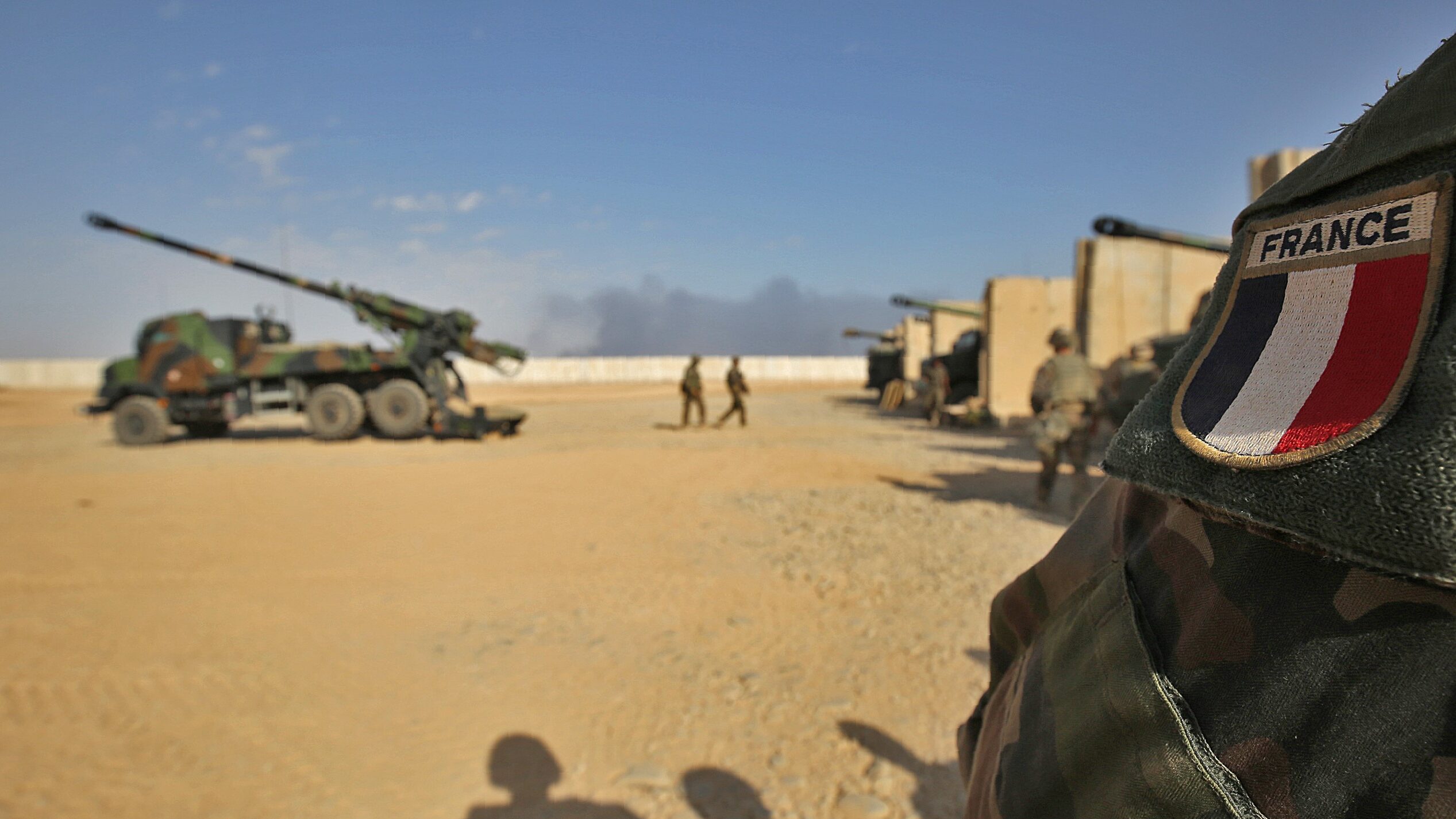
French soldiers stand next to units of CAESAR, a French self-propelled 155 mm/52-calibre gun-howitzer, in the Qayyarah base south of Mosul on October 31, 2016. (Photo credit should read AHMAD AL-RUBAYE/AFP via Getty Images)
PARIS — The French government said this week that it spent some $21.9 billion (€20.3 billion) on equipment across the breadth of its armed forces in 2023, revealing some multi-billion-euro purchases alongside prior high-profile deals.
Though it was known, for instance, that Paris negotiated a $5.5 billion deal for 42 new Rafale fighters and just under $1 billion for high-sea patrol vehicles, the announcement Thursday also detailed a few procurements that flew under the radar, like additional armored vehicles, helicopters for special forces and frigate upgrades.
As the French Institute of International Relations wrote last July, “The new French Military Program Law for 2024-2030 resolutely commits the French armed forces to the path of high intensity,” which it goes on to describe as “a type of engagement deploying a high level of kinetic energy within a limited space and duration.”
For the army, the DGA procurement agency said it has signed a contract worth some €350 million ($378 million) with Nexter, a KNDS company, for 109 new generation Caesar (Mk II) truck-mounted guns with first deliveries scheduled for 2026. The company has been developing this version since December 2021.
In a separate statement Nexter explained that the main improvements brought by the Mk II on the combat-proven Caesar relate to better protection against small-caliber ammunition and explosives, a more powerful engine and a new chassis.
Additionally Nexter and its partner Texelis also won a €500 million ($539 million) to supply 420 Serval multi-role lightweight armored vehicles. The Serval is the third armored vehicle, after the Griffon and Jaguar, developed in the framework of the Scorpion program to modernize the army’s ground vehicles. A further 194 vehicles are still to be ordered to reach the objective of 978 Servals by 2030.
For the navy, the DGA has awarded Naval Group the contract to modernize the Charles de Gaulle aircraft carrier in 2027 when it is due for its third major technical stop, which will last about a year.
A price tag was not included with the announcement, but the ship will be equipped with the new Sea Fire fully digital active electronically scanned array, multifunction, four-fixed-antenna-panels radar for its combat and anti-missile system.
It will also get Naval Group’s most recent SETIS 3.0 combat system and the new ASTER missile firing system from MBDA. These, the defense ministry said in a statement, “will enable the aircraft carrier to maintain the excellence of its defense capabilities against future anti-ship missiles and drones.”
Also for the navy, the DGA announced it had taken delivery on Dec. 2 of the new installations aboard the third and last La Fayette-class frigate to be modernized, the Aconit, after it successfully completed sea-trials. The €400 million ($431 million) upgrade program improved the frigate’s stability and structural resistance, provided it with an anti-submarine sonar, modernized its combat system and replaced the Crotale anti-air system with two Sadral systems armed with Mistral very short range ground-to-air missiles.
The first two to be renovated, the La Fayette and Courbet were delivered in 2022 and 2021, respectively. According to the defense ministry this modernization program has extended the three frigates’ useful life by five years.
Elsewhere MBDA was awarded a contract worth more than €300 million ($323.6 million) for 1,300 Akeron MP surface-to-surface missiles and 329 Mistral ground-to-air missiles. The latter are destined to replenish army and navy stocks and are in the framework of a letter of intent signed in June 2023 by France, Belgium, Cyprus, Estonia and Hungary for joint acquisition of air defense systems.
Special forces are to get a further eight NH90 Caïman Standard 2 helicopters worth €305 million ($329 million). The Standard 2, currently under development, will extend the NH90s capabilities in terms of insertion and extraction of commandos, fire support and tactical communication.
Compared to the Standard 1 currently in service with the conventional forces, the Standard 2 has an additional infrared camera with a laser designator, has additional unspecified weapons and a radio-communication kit for joint and coalition operations. They will be delivered between 2026-29 and will replace the Caracal and Cougar helicopters currently in service.
Air Force awards SNC $13B contract for new ‘Doomsday’ plane
The win is a major victory for the firm in a competition that saw the surprise elimination of aerospace giant Boeing.


























